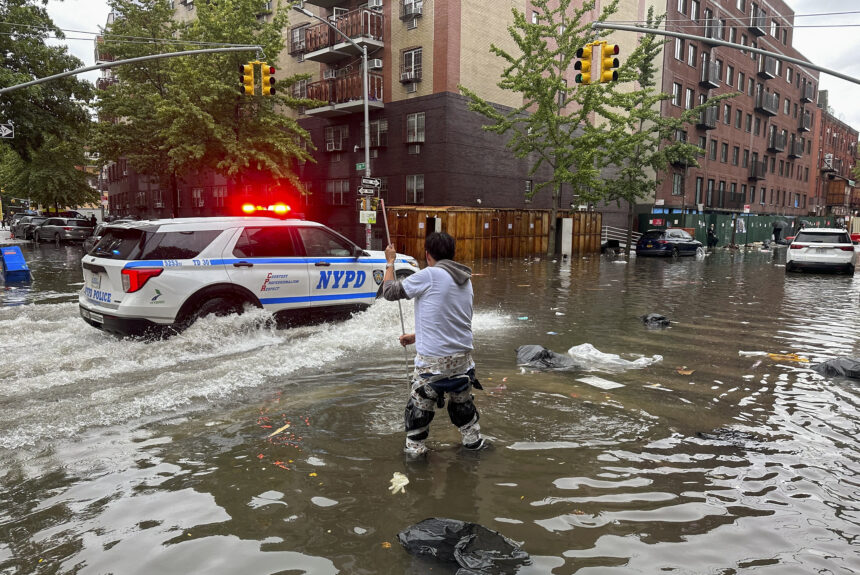Anyone who has ever followed a GPS down a dead-end street understands that, even in the world of smartphones, it is difficult to get anywhere without an accurate map. That is why digital providers are constantly updating their services.
Something similar holds true when it comes to flood insurance. The key to insuring properties is understanding how likely they are to flood. However, the federal government isn’t doing the job it must do: updating the insurance program to reflect actual risks.
>>>READ: Fix Flood Insurance Before It Swamps The Federal Budget Again
The most important step is to reform the National Flood Insurance Program. The NFIP, operated by the Federal Emergency Management Agency, is poorly structured and places undue burdens on taxpayers. The program subsidizes homes, predominantly second homes and vacation homes along the coast, by allowing owners to pay below-market rates for insurance. Meanwhile, the program is some $20 billion in debt, even after Congress forgave $16 billion in debt. It is paying $1.7 million in interest each day.
The NFIP must be reformed to better protect people’s property most at risk without burdening taxpayers who are not at risk. Despite attempts to bring insurance premiums more in line with risk, previous reforms are far short of what is necessary.
Fixing this problem will take more than a decade because the program is only allowed to increase premiums by 18% per year. In fact, according to a recent Government Accountability Office report, “it would take until 2037 for 95 percent of current policies to reach full-risk premiums, resulting in a $27 billion premium shortfall.”
The same report found that 66 percent of policies are in need of higher premiums, and most of the premium increases need to be substantially higher. In fact, 9.4 percent of policies need increases of more than 300 percent. All that is to say the government needs to get started. The longer it waits, the more painful the reform is likely to be. As difficult as those insurance premium hikes will be, accurately reflecting risk through price signals will better inform decisions by homeowners and homebuilders.
Still, there are some lawmakers who are looking to slam on the brakes. Last month, the Senate considered a bill to extend NFIP by a year. “The only thing worse than what we have is nothing,” warned Sen. John Kennedy. His home state of Louisiana would see higher premiums if NFIP is properly reformed because the risk of flooding is so high in that state.
But Kennedy’s extension was shot down by Sen. Mike Lee of Utah. He says the temporary reform measure represents “yet another hollow promise” of reform. “It’s a broken subsidy program,” Lee told the Wall Street Journal.
Despite this, the NFIP was extended in the recently passed continuing resolution, which will temporarily fund the federal government through November 17th. As lawmakers look to pass a federal budget that is fiscally prudent, they should not look to shut down the government, but instead to reform broken and expensive programs like the NFIP. Here are some practical steps Congress should take to begin solving this problem.
First, the government should stop covering new construction in high-flood areas. Too often people build, rebuild and rebuild again in areas that regularly flood because federal flood insurance covers any potential losses. It is a way to privatize people’s enjoyment (none of us are invited to the beach house before it floods) while socializing the risk (taxpayers are on the hook for the cost of rebuilding that same beach house).
>>>READ:The National Flood Insurance Program: Drowning in Rising Sea Levels and Debt
The government should also change its price structures, so people pay a reasonable amount for coverage. If you have a car accident, you expect your insurance premiums to increase. If your home floods during a storm, that should also boost premiums. Also, too many properties are grandfathered. This means rates are based on outdated maps, instead of reflecting the current flood risk. This encourages people to rebuild in areas that are at risk. The government must update the maps, and then use those new maps to price premiums.
In 2021, FEMA began to roll out an updated pricing methodology that would more accurately reflect flood risk. Under this new system, dubbed Risk Rating 2.0, property owners in high-risk areas like Plaquemines Parish, Louisiana will see their flood insurance premiums increase six-fold. Risk Rating 2.0 will take several years to be fully implemented and will result in rate hikes for more than two-thirds of NFIP policyholders. While these rate hikes will be painful for families and individuals, they are necessary to reduce flood risk and the program’s exorbitant debt while getting people out of harm’s way.
Federal policy should also be to transfer policies to private insurance markets whenever possible. Private insurers are constantly updating their actuarial tables to take into account the current risk environment, so they are best prepared to mitigate those risks.
Finally, federal policymakers should invest in natural solutions to help mitigate flood damage. Wherever possible, the government should encourage the protection of wetlands, mangrove forests, and grasslands. These natural barriers absorb and hold water, which can reduce the severity of flooding. The Congressional Budget Office finds that for every $1 spent on such pre-disaster mitigation efforts, $3 in future losses were avoided. That is a better investment than insuring flood-prone areas and paying for rebuilding again and again.
The National Flood Insurance Program puts a significant strain on the federal budget and taxpayers. Instead of renewing it and hoping for the best, lawmakers should update the program as quickly as possible.
The views and opinions expressed are those of the author’s and do not necessarily reflect the official policy or position of C3.
